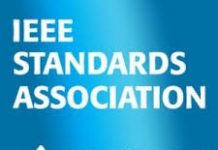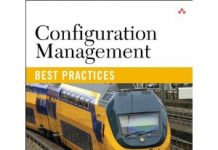The Standards Creation Lifecycle
by Bob Aiello.
I have written about my personal experiences being involved with the amazingly collaborative process of writing an industry standard. This article will specify the steps that are commonly followed in creating a draft of an industry standard. We will be following this sort of lifecycle as we work on creating an industry standard for DevOps.
The IEEE lists the following stages in the standards lifecycle:
- Initiating a Project
- Mobilizing a Working Group
- Drafting a Standard
- Balloting a Standard
- Approving a Standard
- Maintaining a Standard
For this article, our focus will be on step 3, which is the process to draft a standard. Creating a draft usually involves the following steps:
1. Decide on the initial scope and focus.
2. Create an initial outline, which will likely change several times over the drafting process.
3. Identify similar standards and frameworks, which will be reviewed by the team.
4. Assign areas for each member of the working group to research and then share with the working group. (The working group is self-teaching and knowledge based. Additional SMEs outside of the working may be asked to present material to educate the team).
5. The initial outline is revisited several times and updated.
6. Sections of the draft are assigned to volunteers, sometimes in pairs, who go off and draft the initial language.
7. An editor consolidates input and creates the initial draft, which is reviewed in a series of sessions. This step is often quite time consuming.
8. The initial draft is sent to a few subject matter experts outside of the working group for review and comment.
9. Feedback from the reviewers is incorporated into the draft standard and sent out to a wider audience. This process is iterative and the team may find themselves reworking major sections of the standard, and in rare cases, even the scope of the standard itself.
10. Finally, the initial draft is complete and sent out for ballot and comments may still come in from the wider balloting community requiring additional updates.
Above all, the standards creation process is collaborative. There are often many different views and perspectives. The process is also very transparent. Differing views may be expressed and they should be tracked in a document. There should be a documented rationale for rejecting a suggested change or edit to the draft standard. Every effort should be made to harmonize to related industry standards and frameworks. In practice, decisions are made to move the standard along.
The working group chair ensures that the dialog is constructive. If there are personality conflicts or (less than amiable) agendas it is possible that members will be separated from the group. This happens most often due to personality clashes, but can also be due to a vendor trying to hijack the standard to promote his business or product. Vendors are encouraged to participate as they often have highly experienced subject matter experts and it is in their best interests to ensure that industry standards are robust and viable. However, standards must be vendor neutral in every way.
Industry standards are not perfect and there are specific reasons for why they may fall short of expectations. But the process of creating an industry standard is actually pretty robust. I hope that you will consider joining our effort to create an industry standard for DevOps!
Bob Aiello
bob.aiello@ieee.org
http://www.linkedin.com/in/BobAiello
















